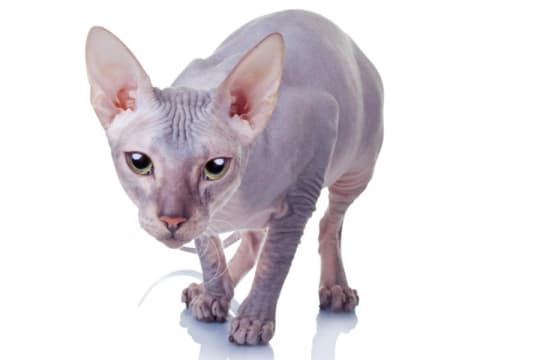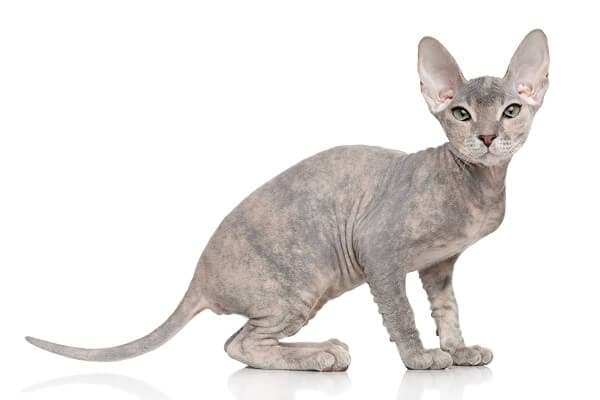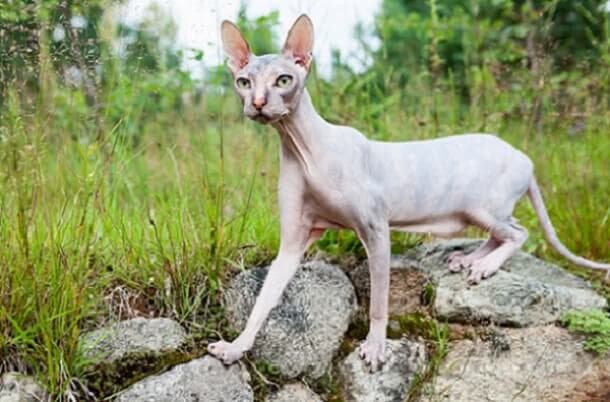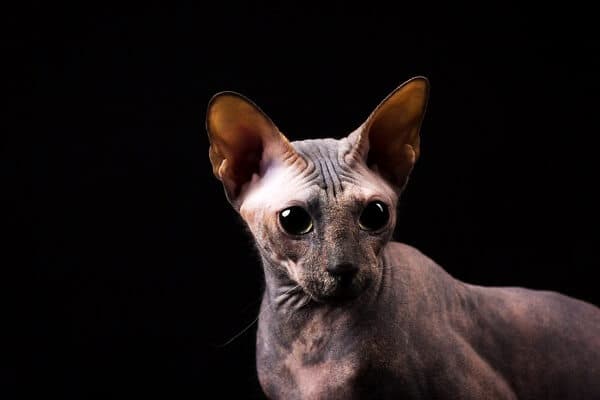
donskoy
Gentle, sociable, smart, trainable
Overview
Origin
Russia
Life Span
12-15 years
Height
12"-14"
Weight
8-15 pounds
Group
Medium-sized hairless
Price
$500-$2,500
History

The first foundation member of this rare cat breed was first encountered in Russia in 1987 when a professor named Elena Kovaleva rescued a kitten that was being mistreated by a group of boys.
The kitten was partially hairless, leading Elena to attempt all kinds of treatments in an effort to restore it's coat - but to no avail. After some time, the cat, now named Varvara, had a litter of kittens that included some with hair and some without hair. Those born with hair soon lost part or all of their coats, and it was determined that Varvara had a genetic mutation rather than a skin disease.
One of Varvara’s hairless kittens was adopted by a professional breeder named Irina Nemikina, who is credited with creating the Donskoy cat breed as we know it today.
The World Cat Federation (WCF) granted their official recognition in 1997 and The International Cat Association (TICA) officially recognized the Don Sphynx cat breed in 2005, registering it under the name ‘Donskoy.’
Care

Nutrition
The Donskoy cat has no special nutritional requirements; however, they do need high-quality food and will benefit from additional omega-3 fatty acid to promote healthy skin.
Grooming
Even though Donskoy cats are nearly free of hair, they're not without maintenance. They require bathing to prevent excess oil buildup, and they may require occasional ear cleaning. In addition, you'll want to teach your cat to accept tooth brushing and nail trimming from a young age.
Exercise
These kitties are muscular and athletic, with a strong desire to jump and run. A cat tree is a must-have! In addition, Donskoy cats love their toys and appreciate interactive play sessions with their people.
Health
Donskoy cats are robust and healthy, but there are concerns over the dominant genetic mutation that causes the breed's lack of hair. It is sometimes associated with poor dentition and a rare condition called feline ectodermal dysplasia.
Breed Standard

Body
The body should be solid and muscular, with a straight back and shoulders that are narrower than the rump.
Head
The head displays a wedge shape, with well-developed cheekbones and eyebrows. The forehead should be flat, and there should be several vertical wrinkles between the ears. The nose should be straight with a medium length and a noticeable transition to the forehead. The muzzle should be rounded, and should be of medium length.
Eyes
Donskoy cats should have medium sized eyes with an almond shape and a slight slant. All eye colors are permitted.
Ears
The Don Sphynx cat should have large ears that are set high on its head, with a slight forward tilt and rounded tips. The outer edge of the ears should continue the vertical lines created by the head. There should be no more than one ear's width between the ears.
Color
All colors and patterns are permitted. In patterns that include white, there is no minimum or maximum allowance for the amount of white to be displayed.
Coat
These cats should be either completely hairless or covered with a slight, downy coat. The skin should display prominent wrinkling on the neck, head, legs, and belly. Whiskers are desirable. Although the tail, paws, muzzle, and legs may have hair up to 2 mm long, completely hairless cats are preferred for breeding and show.
Tail
The tail should be long and straight, and should have a rounded tip.
Legs & Paws
The legs should be muscular, and should be of medium links. The paws should have a slightly rounded shape and the toes should be long.